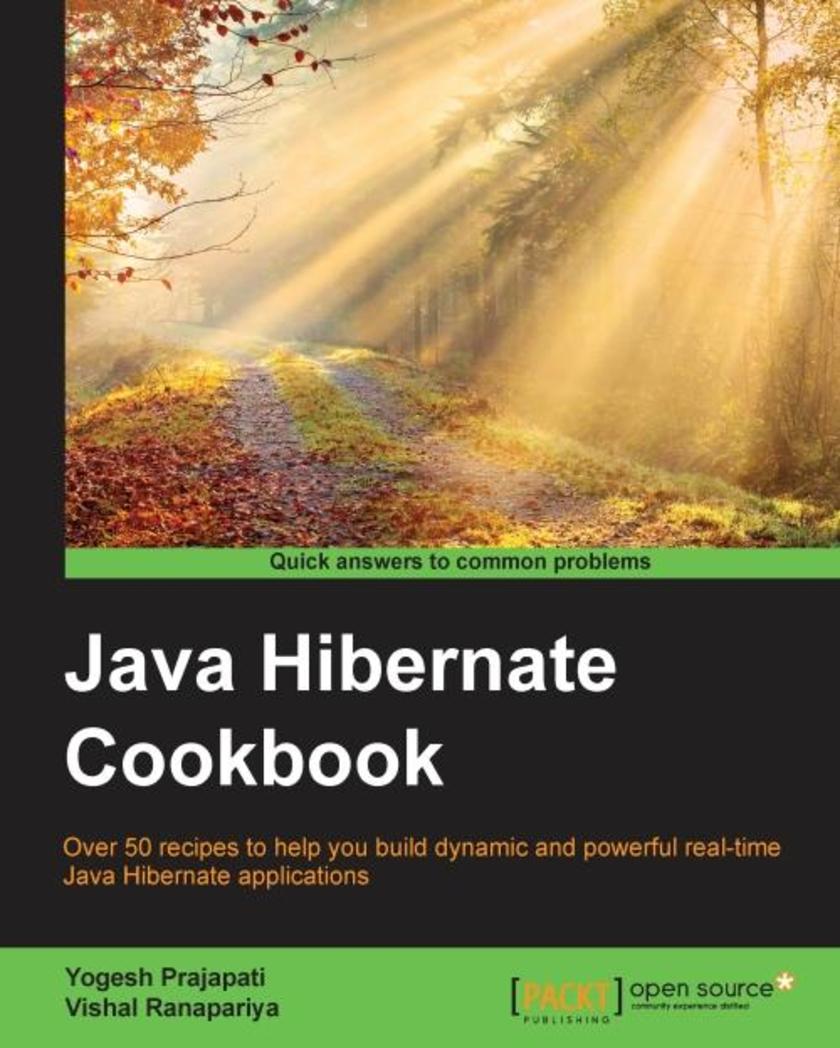
Java Hibernate Cookbook
¥80.65
Over 50 recipes to help you build dynamic and powerful real-time Java Hibernate applications About This Book Learn to associate JDBC and Hibernate with object persistence Manage association mappings, implement basic annotations and learn caching Get to grips with Hibernate fundamentals from installation to developing a business application with this step-by-step guide Who This Book Is For This is book for Java developers who now want to learn Hibernate. Good knowledge and understanding of Java is preferred to allow efficient programming of the core elements and applications; it would be helpful if readers are familiar with the basics of SQL. What You Will Learn Set up and install Hibernate on your system and explore different ways in which Hibernate can be configured Learn the basic concepts and fundamentals of Java Hibernate Define mappings without a use of XML file using Annotations Persist collection elements such as list, map, set and array Explore the various mapping options and learn to work with Hibernate associations Understand advanced Hibernate concepts such as caching and inheritance Develop an engaging and robust real-world hibernate application based on a common business scenario Integrate Hibernate with other frameworks to develop robust enterprise applications In Detail Hibernate is a database independent technology, so the same code will work for all databases. It helps a Java developer write a query by mapping Java bean to database tables and help create tuned queries that boost performance. Even with limited SQL knowledge one can easily perform database operations. This makes the development faster and more accurate than JDBC. Hibernate supports useful features like connection pooling, caching, and inheritance etc. This book will provide a useful hands-on guide to Hibernate to accomplish the development of a real-time Hibernate application. We will start with the basics of Hibernate, which include setting up Hibernate – the pre-requisites and multiple ways of configuring Hibernate using Java. We will then dive deep into the fundamentals of Hibernate such as SessionFactory, session, criteria, working with objects and criteria. This will help a developer have a better understanding of how Hibernate works and what needs to be done to run a Hibernate application. Moving on, we will learn how to work with annotations, associations and collections. In the final chapters, we will see explore querying, advanced Hibernate concepts and integration with other frameworks. Style and approach This book is a practical guide filled with carefully organized step-by-step instructions. All recipes are arranged in an easy-to understand and clear manner allowing you to apply the solutions to other situations.
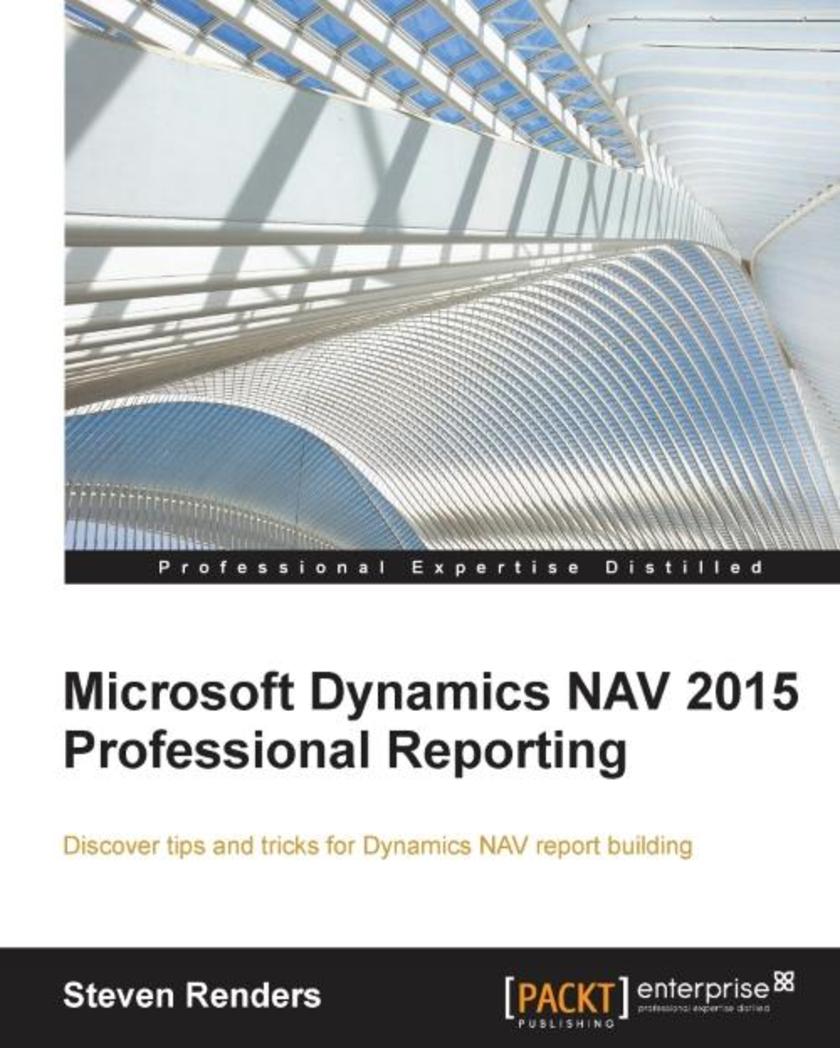
Microsoft Dynamics NAV 2015 Professional Reporting
¥107.90
Discover tips and trick for Dynamics NAV report building About This Book Create and customize reports in Dynamics NAV 2015 using RDLC, Word, Power BI, and Reporting Services Work with different elements in the toolbox such as tablix, which can be used as a List, Table, or Matrix and understand the differences between them and when to use which This book is a pragmatic guide with clear instructions and real-world examples to teach you about the reporting capabilities of Dynamics NAV 2015 Who This Book Is For If you are a consultant, developer, customer, user, or just interested in the reporting capabilities of Dynamics NAV, then this book is for you. Basic knowledge of Dynamics NAV will be helpful. What You Will Learn Understand why reports are designed in a specific way and then apply this knowledge to your advantage Develop document reports using different techniques Apply filtering and sorting, and create groups Use RDLC to visualize information Visualize information, KPIs, and trends using expressions, Gauges, Charts, Data bars, Indicators, and Spark lines Create and optimize your dataset for RDLC and for Word layouts Use Power BI with Dynamics NAV to bring your data to life Build Reporting Services reports on top of Dynamics NAV In Detail Microsoft Dynamics NAV is a multi-lingual, multi-currency business management solution that organizations use to manage their accounts, supply chain, sales, payroll, and HR. It is an ERP tool for organizations that is fast to implement, easy to configure, and simple to use. It is widely used because simplicity is a part of its development, product design, usability, and implementation. This book will help you to master, analyze, and deliver the most challenging reporting requirements in Dynamics NAV 2015. The book starts by explaining report development and it's different phases such as data model, layout, and testing you go through. It introduces you to RDLC and the different controls in the toolbox, such as the Tablix, in its many forms. You will learn to use expressions to make your layout dynamic and to overcome typical problems. Moving on, the book will teach you to visualize data and be able to understand and read a report as it is intended. You will also learn to use Microsoft Word to create a layout for a report. With Power BI and Power Pivot, Power View, and Power Map, you will learn how easy and powerful it is to bring your data to life, so you can spot trends and perform in depth analysis of your business. Reporting Services is also explained as another way that you can apply the knowledge you have about RDLC to build RDL layouts outside of Dynamics NAV. By the end, you will create different types of charts so you can visualize key performance indicators inside the Dynamics NAV application. Style and approach This book is an essential guide in to understanding what is involved in creating reports in Dynamics NAV and its reporting capabilities.
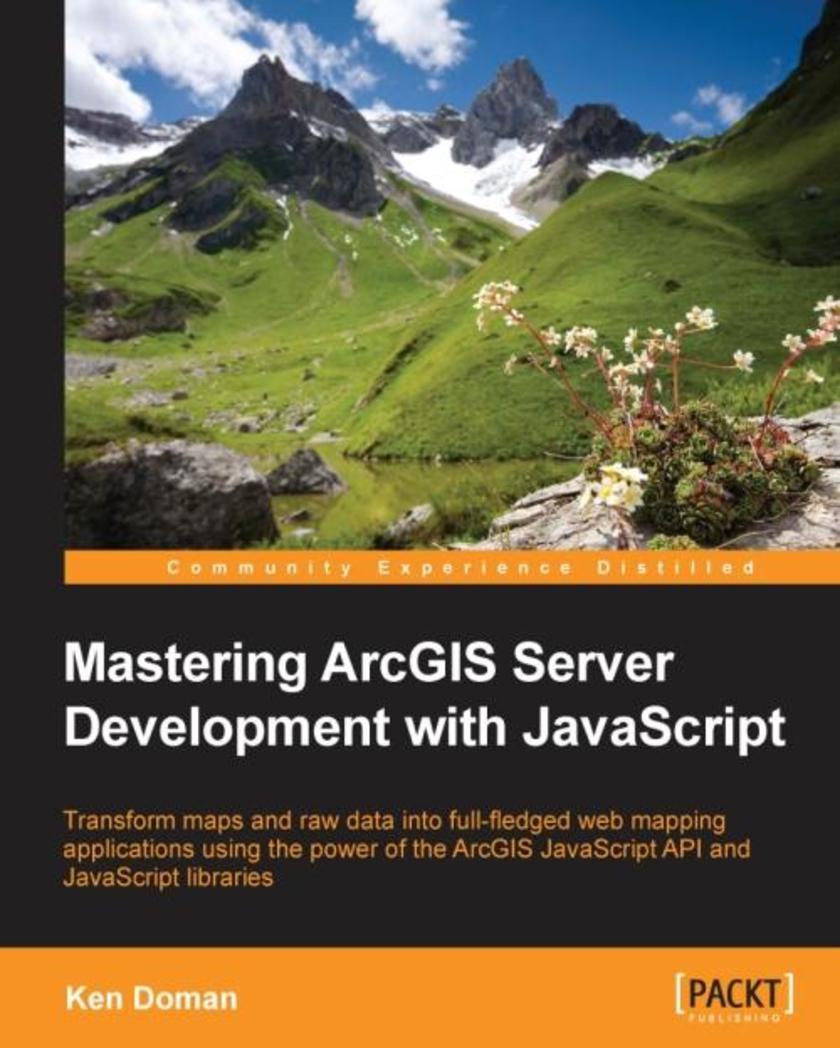
Mastering ArcGIS Server Development with JavaScript
¥80.65
Transform maps and raw data into full-fledged web mapping applications using the power of the ArcGIS JavaScript API and JavaScript libraries About This Book Create and share modern map applications for desktops, tablets, and mobile browsers Present and edit geographic and related data through maps, charts, graphs, and more Learn the tools, tips, and tricks made available through the API and related libraries with examples of real-world applications Who This Book Is For This book is intended for intermediate developers who want to design web mapping applications. You should have some experience with geographic information systems, especially with ArcGIS products such as ArcGIS Server. It also helps to have some experience with HTML, CSS, and JavaScript. What You Will Learn Create single-page mapping applications, lining up data from different sources Search for and display geographic and tabular information based on locations and attributes Customize maps and widgets to deliver the best user experience Present location data intuitively using charts and graphs Integrate mapping applications with your favorite JavaScript frameworks Test the working of your web map application and take advantage of cloud services such as ArcGIS Online Create modern-looking web maps through styling tips and tricks In Detail ESRI and its ArcGIS line of software have been an industry leader in digital map production and publication for over 30 years. ArcGIS Server lets you design, configure, and publish maps that can be viewed and edited through the Internet. After designing basic maps, you may want to find out new and innovative ways to represent information using these maps. In this book, you'll work through practical examples, experiencing the pitfalls and successes of creating desktop and mobile map applications for a web browser using the ArcGIS Server platform. The book begins by introducing you to ArcGIS Server and ESRI's JavaScript API. You'll work with your first web map and then move on to learn about ESRI's building blocks. A Dojo AMS style widget will help you create your own widgets for a map and then see how to collect geographic data. Furthermore, you will learn different techniques such as using Dojo Charts to create charts and graphs to represent your data. Then you will see how to use ESRI JavaScript API with other JavaScript libraries and different styling methods to make your map stand out. By the end of the book, you will discover how to make your application compatible with different devices and platforms and test it using testing libraries. Style and approach An in-depth guide that explores web application development using ArcGIS Server and the ArcGIS JavaScript API. Topics are explained in the context of developing two applications for fictional clients. Details of application development, including possible pitfalls and best practices, are included in this book.
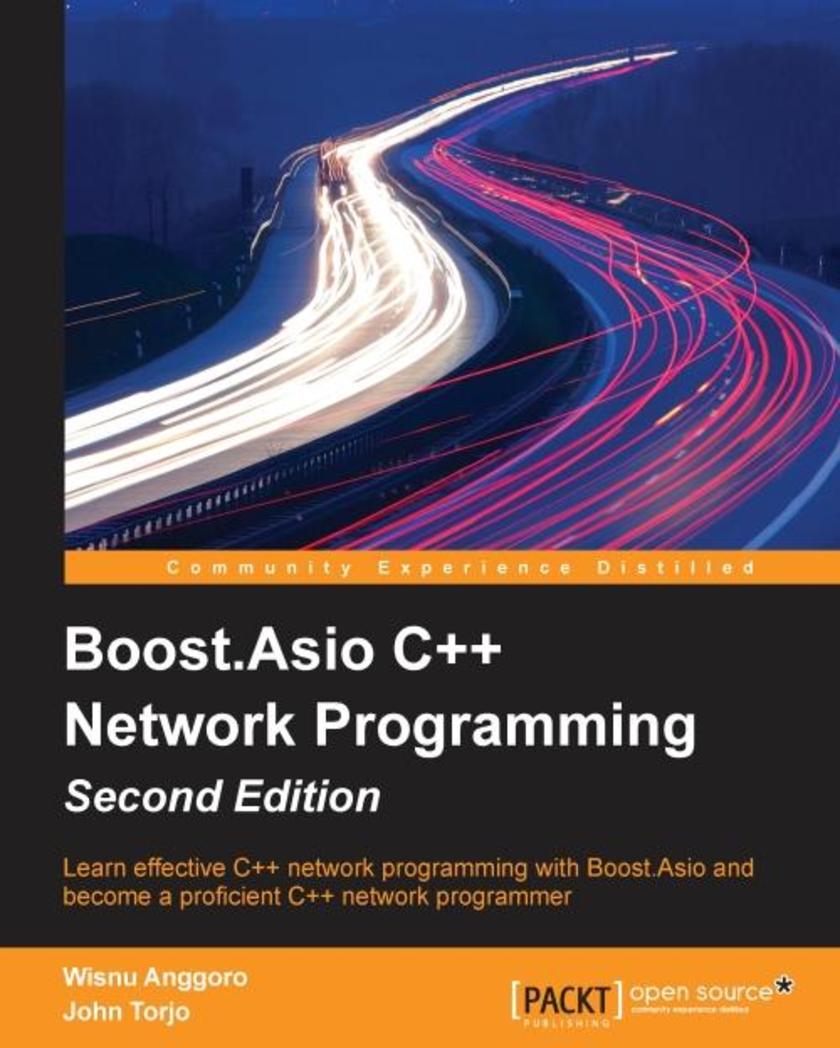
Boost.Asio C++ Network Programming - Second Edition
¥54.49
Learn effective C++ network programming with Boost.Asio and become a proficient C++ network programmer About This Book Learn efficient C++ network programming with minimum coding using Boost.Asio Your one-stop destination to everything related to the Boost.Asio library Explore the fundamentals of networking to choose designs with more examples, and learn the basics of Boost.Asio Who This Book Is For This book is for C++ Network programmers with basic knowledge of network programming, but no knowledge of how to use Boost.Asio for network programming. What You Will Learn Prepare the tools to simplify network programming in C++ using Boost.Asio Explore the networking concepts of IP addressing, TCP/IP ports and protocols, and LAN topologies Get acquainted with the usage of the Boost libraries Get to know more about the content of Boost.Asio network programming and Asynchronous programming Establish communication between client and server by creating client-server application Understand the various functions inside Boost.Asio C++ libraries to delve into network programming Discover how to debug and run the code successfully In Detail Boost.Asio is a C++ library used for network programming operations. Organizations use Boost because of its productivity. Use of these high-quality libraries speed up initial development, result in fewer bugs, reduce reinvention-of-the-wheel, and cut long-term maintenance costs. Using Boost libraries gives an organization a head start in adopting new technologies. This book will teach you C++ Network programming using synchronous and asynchronous operations in Boost.Asio with minimum code, along with the fundamentals of Boost, server-client applications, debugging, and more. You will begin by preparing and setting up the required tools to simplify your network programming in C++ with Boost.Asio. Then you will learn about the basic concepts in networking such as IP addressing, TCP/IP protocols, and LAN with its topologies. This will be followed by an overview of the Boost libraries and their usage. Next you will get to know more about Boost.Asio and its concepts related to network programming. We will then go on to create a client-server application, helping you to understand the networking concepts. Moving on, you will discover how to use all the functions inside the Boost.Asio C++ libraries. Lastly, you will understand how to debug the code if there are errors found and will run the code successfully. Style and approach An example-oriented book to show you the basics of networking and help you create a network application simply using Boost.Asio, with more examples for you to get up and running with Boost.Asio quickly.
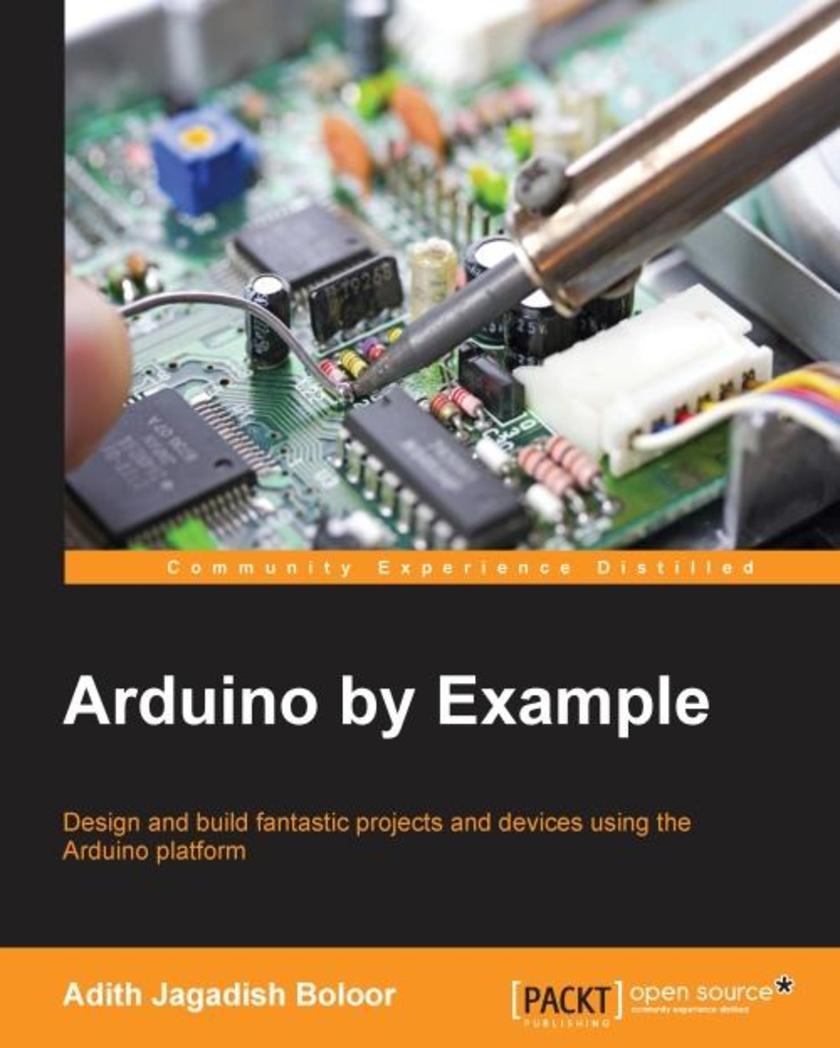
Arduino by Example
¥71.93
Design and build fantastic projects and devices using the Arduino platform About This Book Explore the different sensors that can be used to improve the functionality of the Arduino projects Program networking modules in conjunction with Arduino to make smarter and more communicable devices A practical guide that shows you how to utilize Arduino to create practical, useful projects Who This Book Is For This book is an ideal choice for hobbyists or professionals who want to create quick and easy projects with Arduino. As a prerequisite, readers must have a working Arduino system and some programming background, ideally in C/C++. Basic knowledge of Arduino is helpful but not required to follow along with this book. What You Will Learn Understand and utilize the capabilities of the Arduino Integrate sensors to gather environmental data and display this information in meaningful ways Add modules such as Bluetooth and Wi-fithat allow the Arduino to communicate and send data between devices Create simple servers to allow communication to occur Build automated projects including robots while learning complex algorithms to mimic biological locomotion Implement error handling to make programs easier to debug and look more professional Integrate powerful programming tools and software such as Python and Processing to broaden the scope of what the Arduino can achieve Practice and learn basic programming etiquette In Detail Arduino an opensource physical computing platform based on a simple microcontroller board, and a development environment for writing software for the board. The opensource Arduino software (IDE) makes it easy to write code and upload it to the board. It runs on Windows, Mac OS X, and Linux. The environment is written in Java and based on Processing and other opensource software. With the growing interest in home-made, weekend projects among students and hobbyists alike, Arduino offers an innovative and feasible platform to create projects that promote creativity and technological tinkering. Arduino by Example is a project-oriented guide to help you fully utilize the power of one of the world's most powerful open source platforms, Arduino. This book demonstrates three projects ranging from a home automation project involving your lighting system to a simple robotic project to a touch sensor project. You will first learn the basic concepts such as how to get started with the Arduino, and as you start building the project, you will develop the practical skills needed to successfully build Arduino powered projects that have real-life implications. The complexity of the book slowly increases as you complete a project and move on to the next. By the end of this book, you will be able to create basic projects and utilize the elements used in the examples to construct your own devices. Style and approach This book follows a project-oriented approach, with multiple images and plenty of code to help you build your projects easily. The book uses a tutorial-based methodology where the concepts are first explained and then implemented to help you develop the projects.
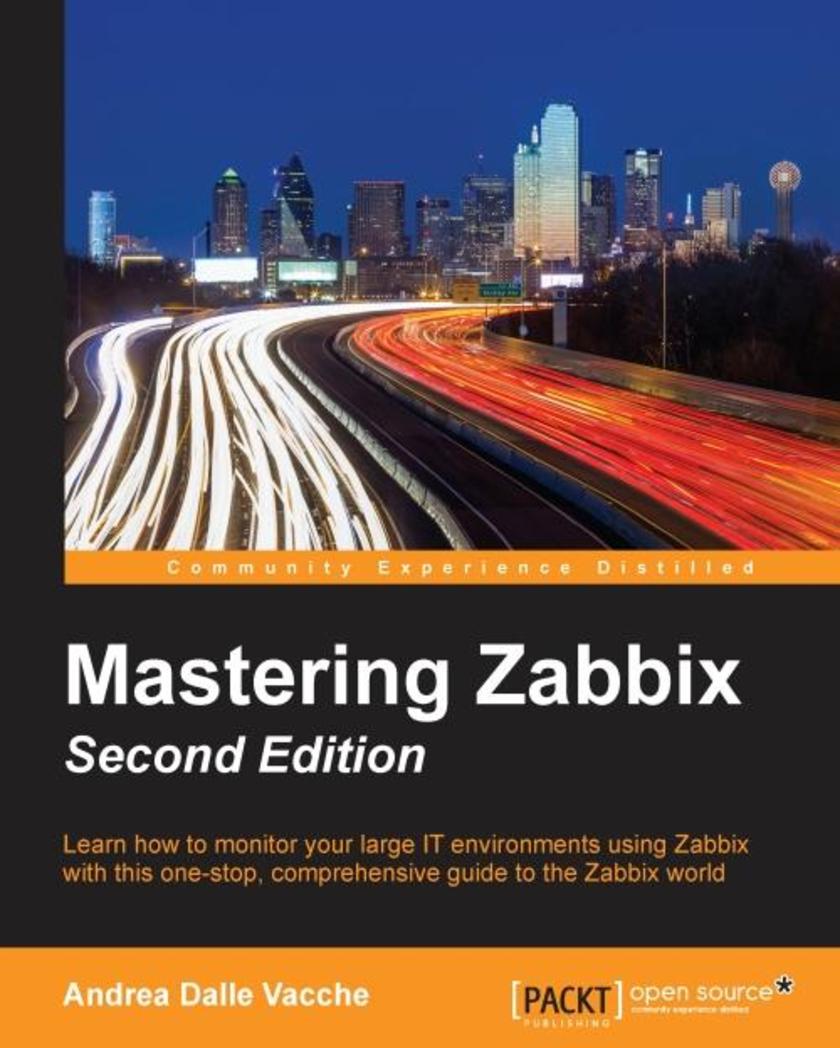
Mastering Zabbix - Second Edition
¥90.46
Learn how to monitor your large IT environments using Zabbix with this one-stop, comprehensive guide to the Zabbix world About This Book Create a tailor-made monitoring solution based on your specific needs Learn advanced techniques of Zabbix to monitor networks, performances, and other critical features in large environments Integrate, customize, and extend your monitoring solutions with external components and software Who This Book Is For This book is intended for system administrators and IT architects who need to better integrate their Zabbix installation with their surrounding environment. A basic, working knowledge of Zabbix and Linux is assumed so that the book can focus on how to use every component to its full advantage. It will also be helpful to be familiar with programming concepts and languages but if not, all the content in the book is thorough and well documented. What You Will Learn Efficiently collect data from a large variety of monitoring objects Organize your data in graphs, charts, maps, and slide shows Build intelligent triggers and alarms to monitor your network proactively Write your own custom probes and monitoring *s to extend Zabbix Configure Zabbix and its database to be high available and fault-tolerant Automate repetitive procedures using Zabbix's API Integrate Zabbix with external systems Understand the protocol and how to interact with it by writing your own custom agent In Detail Nowadays monitoring systems play a crucial role in any IT environment. They are extensively used to not only measure your system’s performance, but also to forecast capacity issues. This is where Zabbix, one of the most popular monitoring solutions for networks and applications, comes into the picture. With an efficient monitoring system in place you’ll be able to foresee when your infrastructure runs under capacity and react accordingly. Due to the critical role a monitoring system plays, it is fundamental to implement it in the best way from its initial setup. This avoids misleading, confusing, or, even worse, false alarms which can disrupt an efficient and healthy IT department. This new edition will provide you with all the knowledge you need to make strategic and practical decisions about the Zabbix monitoring system. The setup you’ll do with this book will fit your environment and monitoring needs like a glove. You will be guided through the initial steps of choosing the correct size and configuration for your system, to what to monitor and how to implement your own custom monitoring component. Exporting and integrating your data with other systems is also covered. By the end of this book, you will have a tailor-made and well configured monitoring system and will understand with absolute clarity how crucial it is to your IT environment. Style and approach This book is an easy to follow, step-by-step guide to monitoring network and performance in large environments with Zabbix. It is designed for real-world Zabbix administrators, and is comprised of a perfect mix of theoretical explanations and practical applications, making it your perfect companion.
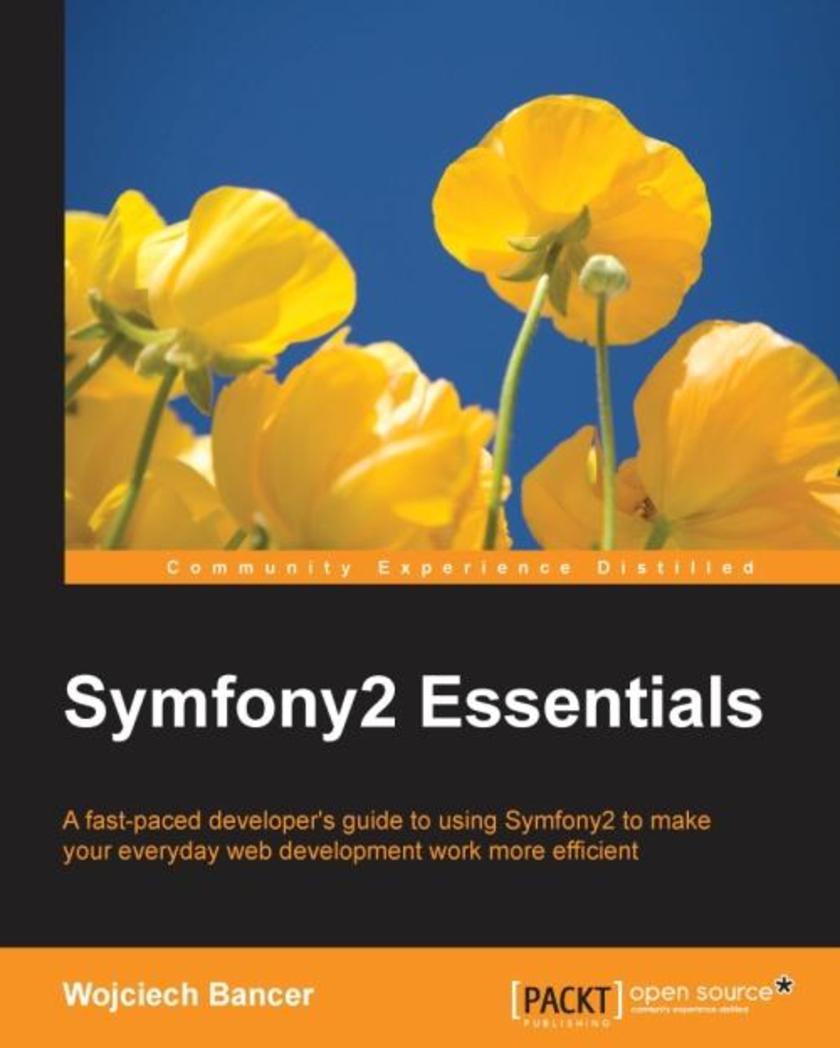
Symfony2 Essentials
¥54.49
A fast-paced developer's guide to using Symfony2 to make your everyday web development work more efficient Key Features Build web applications with the latest features of Symfony2 Focus on common tasks such as creating CRUD, creating an API, and providing a login Install and configure Symfony2 and evaluate it for your everyday needs Who This Book Is For This book is aimed at experienced programmers, especially those familiar with a closely related technology such as Yii or Laravel, but who now want to learn Symfony quickly. This book will also prove beneficial for experienced PHP developers who want to explore and evaluate new frameworks and their possibilities in day-to-day tasks. What You Will Learn Familiarise yourself with the Symfony framework, its latest features, and how to install it Discover the concept of bundles and their application Handle translations within Symfony, enable translations, and learn how to handle database translations Understand Symfony's security model, how to secure applications, and implement a custom authentication provider by using FOSUserBundle Explore the use of Twig, find best practices around its usage, and discover its common pitfalls Create internal commands that will handle sending e-mail reminders for your app Develop a plugin for the profiler to provide custom information about your application Deploy applications based on Symfony2 using various methods including simple FTP copying, rsync, CI deployment, and more In Detail Symfony is a free and open source PHP MVC web application development framework, which helps you create and maintain web applications and replace recurrent coding tasks. It integrates with an independent library, PHPUnit, to give you a rich testing framework. It is one of the best and most popular frameworks available on the market. Popular projects such as Drupal, Laravel, and phpBB also use Symfony. Its well-organized structure, clean code, and good programming practices make web development a breeze. Symfony2 Essentials will guide you through the process of creating a sample web application with Symfony2. You will create a To-Do application, using a few of the most commonly used Symfony2 components, and discover how to perform these development tasks efficiently. This book introduces you to the Symfony framework with a quick installation guide and a brief explanation of its key features including the MVC architecture, twig templating, dependency injection, and more. You will learn to manage dependencies, create controllers, views, and API calls, and secure your application. Next, you will go through the steps that are common for most web applications, which include writing CRUD and AJAX, handling forms, validation, translations, and the command-line interface, and e-mail sending features. The book ends with best practices, debugging, profiling, and deployment procedures. By the end of this book, you will have learned how to combine a Symfony2 framework with other open source code to speed up the development process. Style and approach A fast-paced, step-by-step guide with examples on how to write the most common pieces of code while developing typical web applications with Symfony.
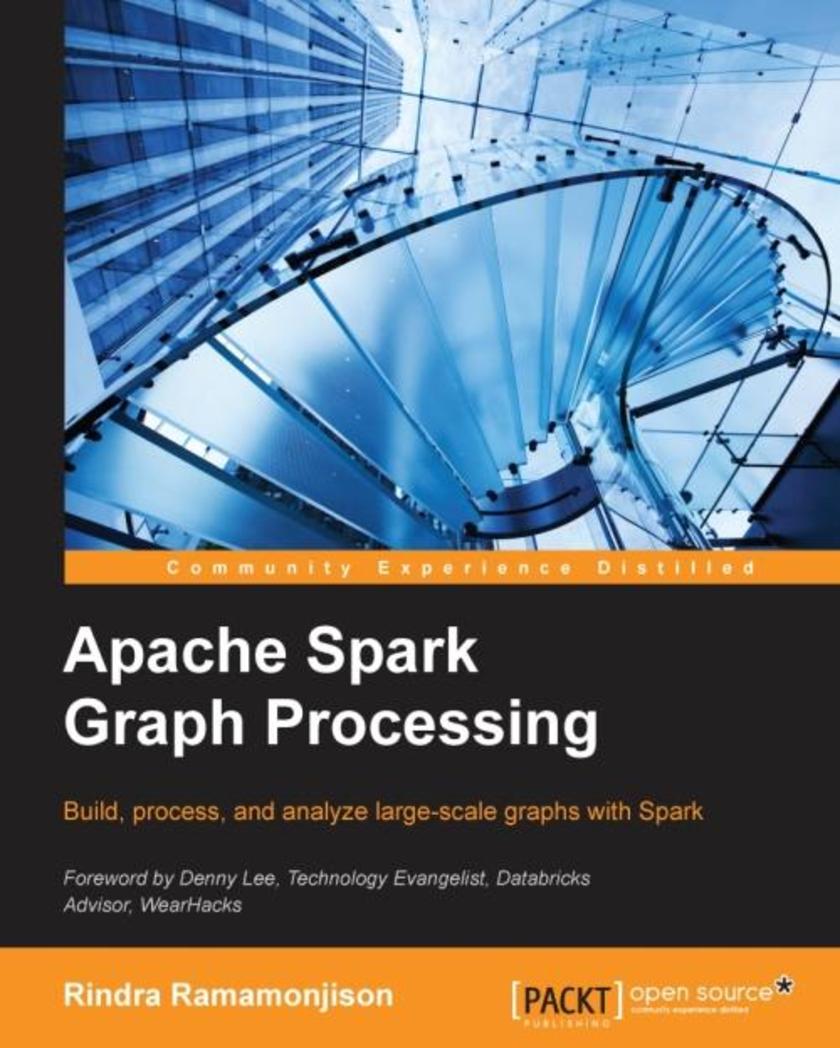
Apache Spark Graph Processing
¥63.21
Build, process and analyze large-scale graph data effectively with Spark About This Book Find solutions for every stage of data processing from loading and transforming graph data to Improve the scalability of your graphs with a variety of real-world applications with complete Scala code. A concise guide to processing large-scale networks with Apache Spark. Who This Book Is For This book is for data scientists and big data developers who want to learn the processing and analyzing graph datasets at scale. Basic programming experience with Scala is assumed. Basic knowledge of Spark is assumed. What You Will Learn Write, build and deploy Spark applications with the Scala Build Tool. Build and analyze large-scale network datasets Analyze and transform graphs using RDD and graph-specific operations Implement new custom graph operations tailored to specific needs. Develop iterative and efficient graph algorithms using message aggregation and Pregel abstraction Extract subgraphs and use it to discover common clusters Analyze graph data and solve various data science problems using real-world datasets. In Detail Apache Spark is the next standard of open-source cluster-computing engine for processing big data. Many practical computing problems concern large graphs, like the Web graph and various social networks. The scale of these graphs - in some cases billions of vertices, trillions of edges - poses challenges to their efficient processing. Apache Spark GraphX API combines the advantages of both data-parallel and graph-parallel systems by efficiently expressing graph computation within the Spark data-parallel framework. This book will teach the user to do graphical programming in Apache Spark, apart from an explanation of the entire process of graphical data analysis. You will journey through the creation of graphs, its uses, its exploration and analysis and finally will also cover the conversion of graph elements into graph structures. This book begins with an introduction of the Spark system, its libraries and the Scala Build Tool. Using a hands-on approach, this book will quickly teach you how to install and leverage Spark interactively on the command line and in a standalone Scala program. Then, it presents all the methods for building Spark graphs using illustrative network datasets. Next, it will walk you through the process of exploring, visualizing and analyzing different network characteristics. This book will also teach you how to transform raw datasets into a usable form. In addition, you will learn powerful operations that can be used to transform graph elements and graph structures. Furthermore, this book also teaches how to create custom graph operations that are tailored for specific needs with efficiency in mind. The later chapters of this book cover more advanced topics such as clustering graphs, implementing graph-parallel iterative algorithms and learning methods from graph data. Style and approach A step-by-step guide that will walk you through the key ideas and techniques for processing big graph data at scale, with practical examples that will ensure an overall understanding of the concepts of Spark.
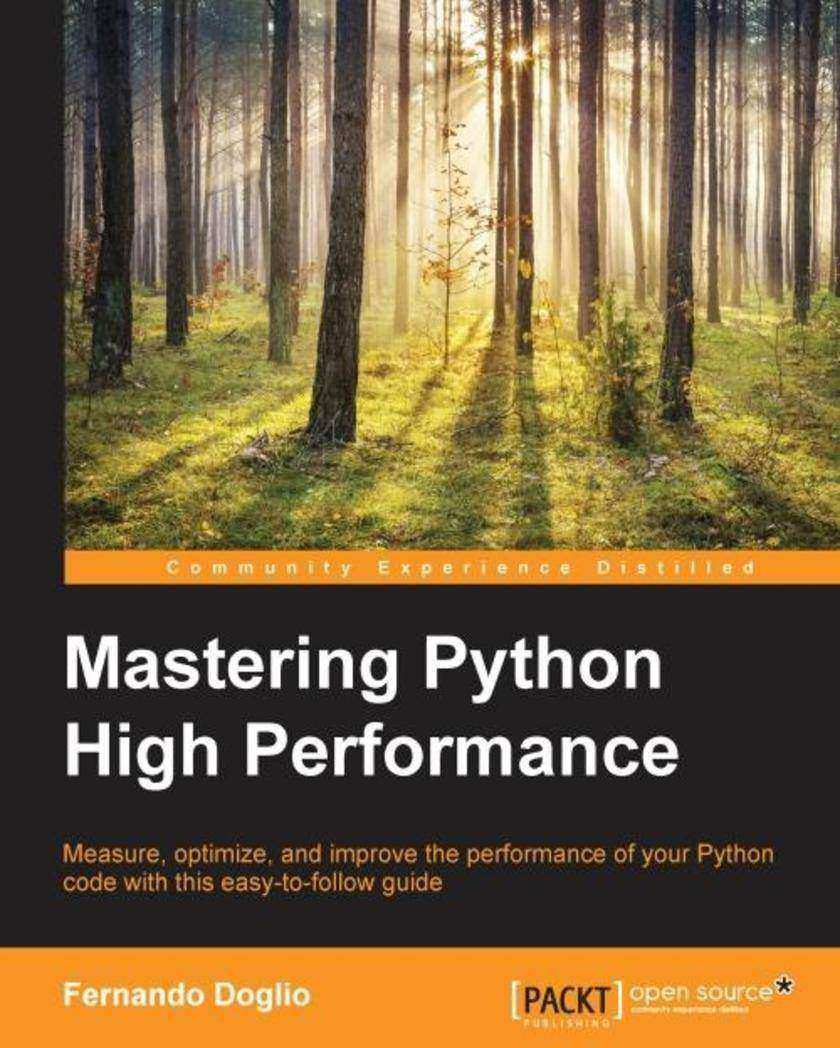
Mastering Python High Performance
¥71.93
Measure, optimize, and improve the performance of your Python code with this easy-to-follow guide About This Book Master the do's and don'ts of Python performance programming Learn how to use exiting new tools that will help you improve your *s A step-by-step, conceptual guide to teach you how to optimize and fine-tune your critical pieces of code Who This Book Is For If you're a Python developer looking to improve the speed of your *s or simply wanting to take your skills to the next level, then this book is perfect for you. What You Will Learn Master code optimization step-by-step and learn how to use different tools Understand what a profiler is and how to read its output Interpret visual output from profiling tools and improve the performance of your * Use Cython to create fast applications using Python and C Take advantage of PyPy to improve performance of Python code Optimize number-crunching code with NumPy, Numba, Parakeet, and Pandas In Detail Simply knowing how to code is not enough; on mission-critical pieces of code, every bit of memory and every CPU cycle counts, and knowing how to squish every bit of processing power out of your code is a crucial and sought-after skill. Nowadays, Python is used for many scientific projects, and sometimes the calculations done in those projects require some serious fine-tuning. Profilers are tools designed to help you measure the performance of your code and help you during the optimization process, so knowing how to use them and read their output is very handy. This book starts from the basics and progressively moves on to more advanced topics. You’ll learn everything from profiling all the way up to writing a real-life application and applying a full set of tools designed to improve it in different ways. In the middle, you’ll stop to learn about the major profilers used in Python and about some graphic tools to help you make sense of their output. You’ll then move from generic optimization techniques onto Python-specific ones, going over the main constructs of the language that will help you improve your speed without much of a change. Finally, the book covers some number-crunching-specific libraries and how to use them properly to get the best speed out of them. After reading this book, you will know how to take any Python code, profile it, find out where the bottlenecks are, and apply different techniques to remove them. Style and approach This easy-to-follow, practical guide will help you enhance your optimization skills by improving real-world code.
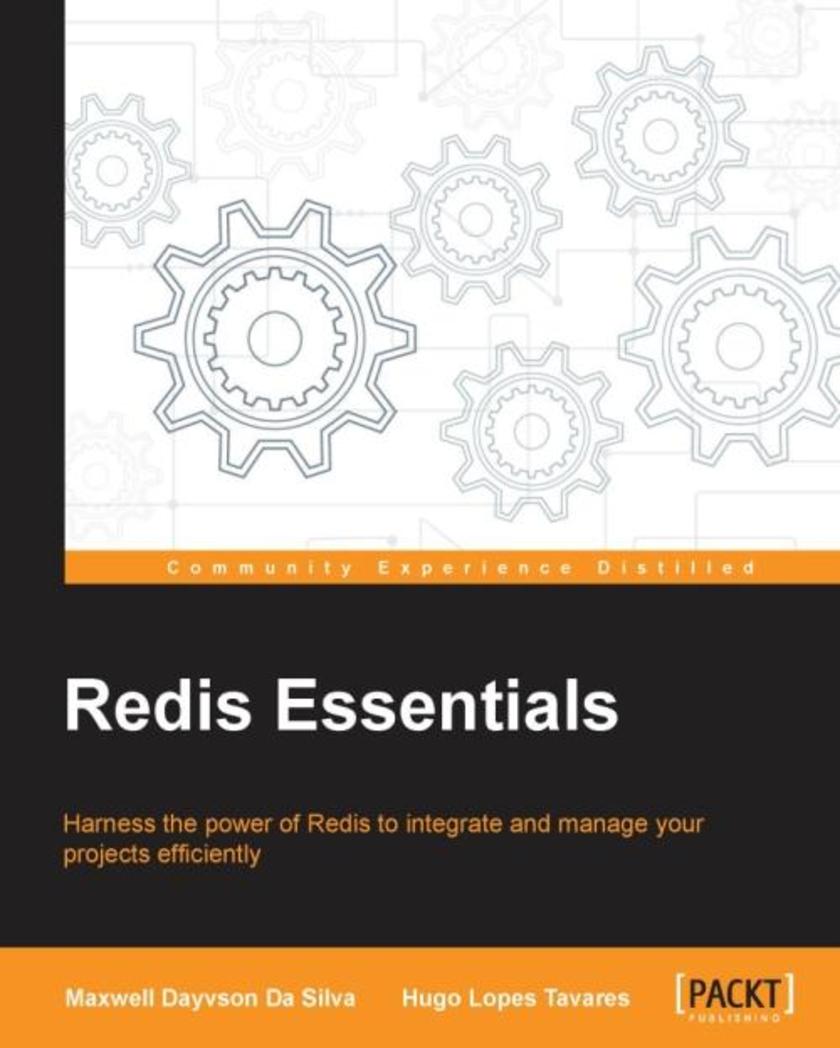
Redis Essentials
¥71.93
Harness the power of Redis to integrate and manage your projects efficiently About This Book Learn how to use Redis's data types efficiently to manage large data sets Scale Redis to multiple servers with Twemproxy, Redis Sentinel, and Redis Cluster A fast-paced guide, full of real-world examples to help you get the best out of the features offered by Redis Who This Book Is For If you are a competent developer with experience of working with data structure servers and want to boost your project's performance by learning about features of Redis, then this book is for you. What You Will Learn Build analytics applications using Bitmaps and Hyperloglogs Enhance scalability with Twemproxy, Redis Sentinel, and Redis Cluster Build a Time Series implementation in Node.js and Redis Create your own Redis commands by extending Redis with Lua Get to know security techniques to protect your data (SSL encryption, firewall rules, basic authorization) Persist data to disk and learn the trade-offs of AOF and RDB Understand how to use Node.js, PHP, Python, and Ruby clients for Redis Avoid common pitfalls when designing your next solution In Detail Redis is the most popular in-memory key-value data store. It’s very lightweight and its data types give it an edge over the other competitors. If you need an in-memory database or a high-performance cache system that is simple to use and highly scalable, Redis is what you need. Redis Essentials is a fast-paced guide that teaches the fundamentals on data types, explains how to manage data through commands, and shares experiences from big players in the industry. We start off by explaining the basics of Redis followed by the various data types such as Strings, hashes, lists, and more. Next, Common pitfalls for various scenarios are described, followed by solutions to ensure you do not fall into common traps. After this, major differences between client implementations in PHP, Python, and Ruby are presented. Next, you will learn how to extend Redis with Lua, get to know security techniques such as basic authorization, firewall rules, and SSL encryption, and discover how to use Twemproxy, Redis Sentinel, and Redis Cluster to scale infrastructures horizontally. At the end of this book, you will be able to utilize all the essential features of Redis to optimize your project's performance. Style and approach A practical guide that offers the foundation upon which you can begin to understand the capabilities of Redis using a step-by-step approach. This book is full of real-world problems and in-depth knowledge of the concepts and features of Redis, with plenty of examples.
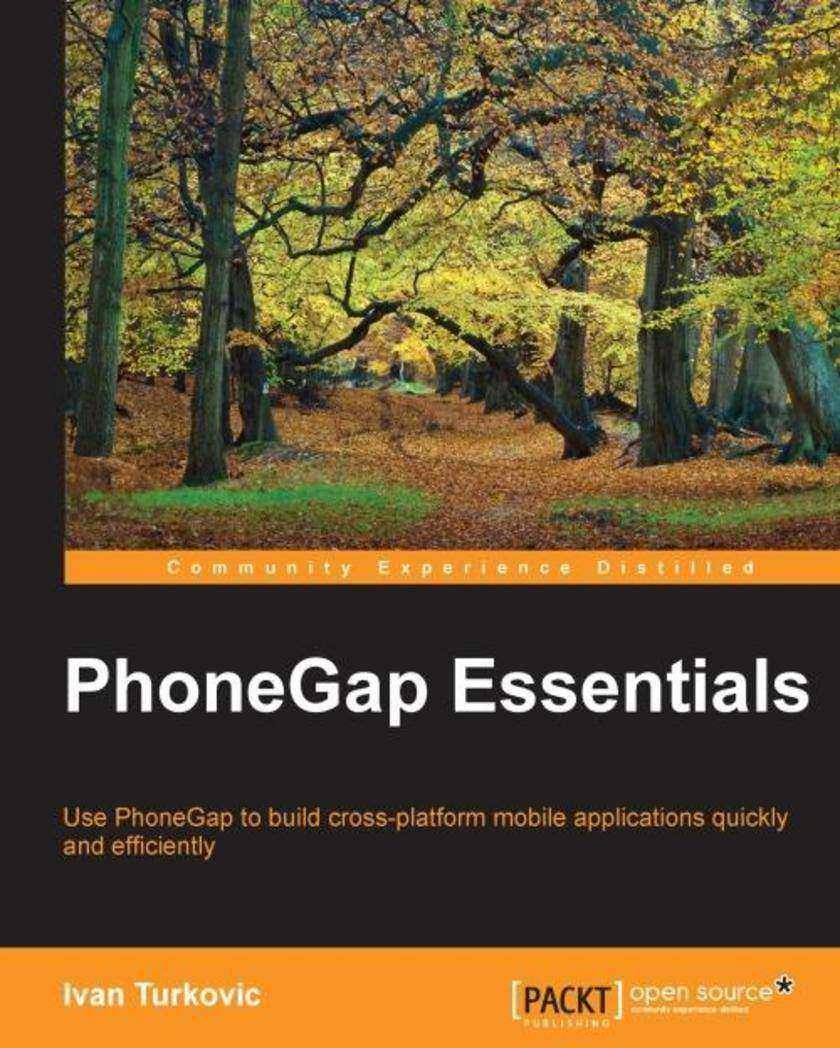
PhoneGap Essentials
¥54.49
Use PhoneGap to build cross-platform mobile applications quickly and efficiently About This Book Build native mobile phone applications with HTML5, JavaScript, and CSS Incorporate smartphone capabilities such as GPS, camera, accelerometer, and more into your apps for any mobile platform Use Cordova view to embed PhoneGap into native applications to either transit smoothly to PhoneGap or incorporate PhoneGap functionalities Who This Book Is For If you are a mobile application developer in iOS or Android, or a web application developer who wants to learn how to make cross-platform mobile applications using PhoneGap, this book is perfect for you. To make the most of this book, it will be helpful if you have prior knowledge of HTML5, CSS, and JavaScript. What You Will Learn Get to grips with the fundamentals of PhoneGap to get started Set up a development environment for Linux, Mac OS, and Windows Use Cordova CLI, workflows, and Plugman Plugin manager to create mobile applications efficiently Understand the development workflow to create native cross-platform mobile applications Embed plugin support to transition to PhoneGap or use it to enhance existing applications Improve your mobile development knowledge using object-oriented programming (OOP), reusable components, and AJAX closures Be empowered to build your own mobile apps quickly with ease Discover tips and tricks to make app development fun and easy In Detail PhoneGap is an open source framework that allows you to quickly build cross-platform mobile apps using HTML5, JavaScript, and CSS. PhoneGap Build is a cloud service that allows you to quickly develop and compile mobile applications without SDKs, compilers, and hardware. PhoneGap allows you to use its existing plugins or create new ones, as per your requirements, to enhance your mobile applications. Starting by installing PhoneGap, you’ll develop an app that uses various device capabilities through different plugins and learn how to build an app in the cloud with PhoneGap’s Build service. You’ll discover how to use PhoneGap to create an application view, along with how to use a camera, geolocation, and other device capabilities to create engaging apps. Next, you’ll augment applications with PhoneGap's plugins using minimalistic code. You’ll explore the app preparation process to deploy your app to the app store. By the end of the book, you’ll have also learned how to apply hybrid mobile UIs that will work across different platforms and different screen sizes for better user experience. Style and approach This is an example-based, fast-paced guide that covers the fundamentals of creating cross-platform mobile applications with PhoneGap.
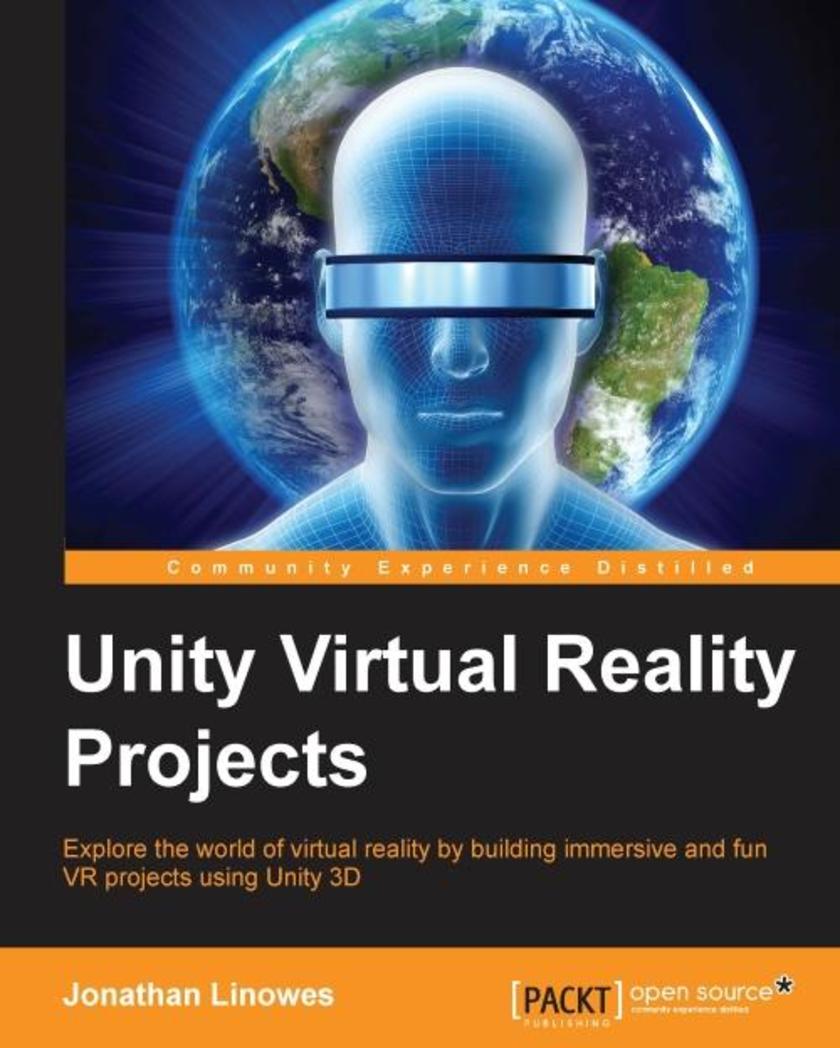
Unity Virtual Reality Projects
¥71.93
Explore the world of Virtual Reality by building immersive and fun VR projects using Unity 3D About This Book Learn the basic principles of virtual reality applications and get to know how they differ from games and desktop apps Build various types of VR experiences, including diorama, first-person characters, riding on rails, 360 degree projections, and social VR A project-based guide that teaches you to use Unity to develop VR applications, which can be experienced with devices such as the Oculus Rift or Google Cardboard Who This Book Is For If you’re a non-programmer unfamiliar with 3D computer graphics, or experienced in both but new to virtual reality, and are interested in building your own VR games or applications then this book is for you. Any experience in Unity is an advantage. What You Will Learn Create 3D scenes with Unity and Blender while learning about world space and scale Build and run VR applications for consumer headsets including Oculus Rift and Google Cardboard Build interactive environments with physics, gravity, animations, and lighting using the Unity engine Experiment with various user interface (UI) techniques that you can use in your VR applications Implement the first-person and third-person experiences that use only head motion gestures for input Create animated walkthroughs, use 360-degree media, and build multi-user social VR experiences Learn about the technology and psychology of VR including rendering, performance and VR motion sickness Gain introductory and advanced experience in Unity programming with the C# language In Detail What is consumer “virtual reality”Wearing a head-mounted display you view stereoscopic 3D scenes. You can look around by moving your head, and walk around using hand controls or motion sensors. You are engaged in a fully immersive experience. On the other hand, Unity is a powerful game development engine that provides a rich set of features such as visual lighting, materials, physics, audio, special effects, and animation for creating 2D and 3D games. Unity 5 has become the leading platform for building virtual reality games, applications and experiences for this new generation of consumer VR devices. Using a practical and project-based approach, this book will educate you about the specifics of virtual reality development in Unity. You will learn how to use Unity to develop VR applications which can be experienced with devices such as the Oculus Rift or Google Cardboard. We will then learn how to engage with virtual worlds from a third person and first person character point of view. Furthermore, you will explore the technical considerations especially important and possibly unique to VR. The projects in the book will demonstrate how to build a variety of VR experiences. You will be diving into the Unity 3D game engine via the interactive Unity Editor as well as C-Sharp programming. By the end of the book, you will be equipped to develop rich, interactive virtual reality experiences using Unity. So, let's get to it! Style and approach This book takes a practical, project-based approach to teach specifics of virtual reality development in Unity. Using a reader-friendly approach, this book will not only provide detailed step-by-step instructions but also discuss the broader context and applications covered within.
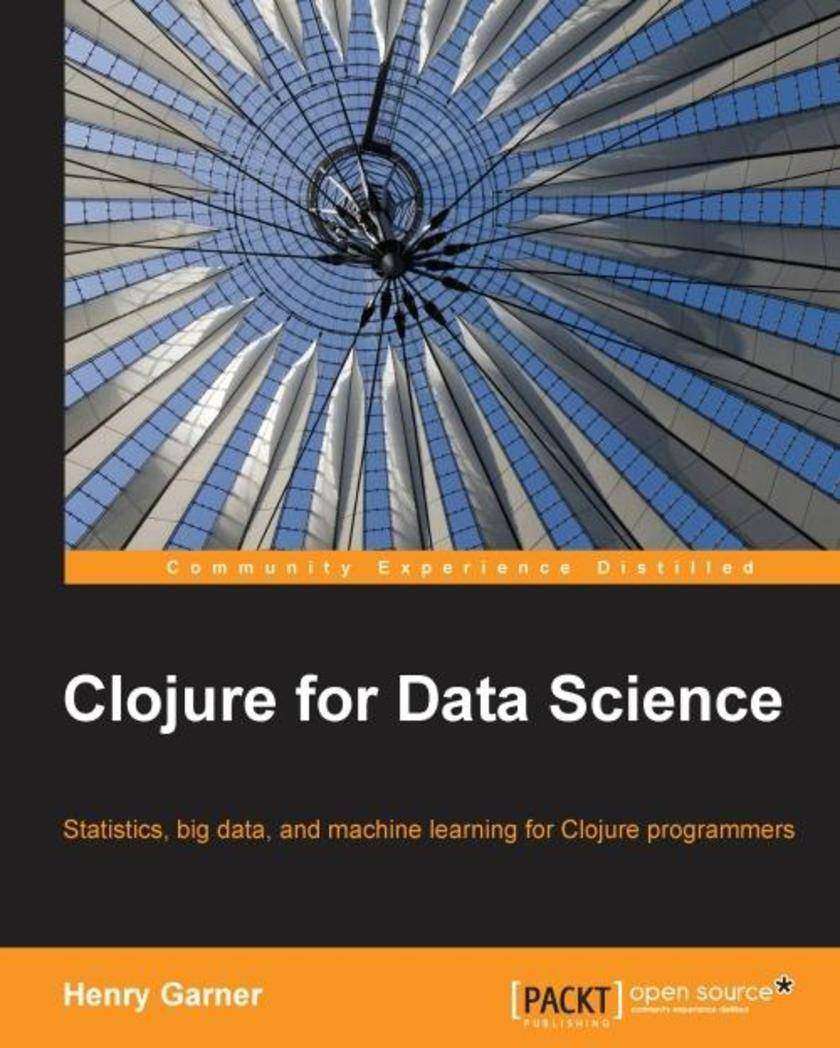
Clojure for Data Science
¥80.65
Statistics, big data, and machine learning for Clojure programmers About This Book Write code using Clojure to harness the power of your data Discover the libraries and frameworks that will help you succeed A practical guide to understanding how the Clojure programming language can be used to derive insights from data Who This Book Is For This book is aimed at developers who are already productive in Clojure but who are overwhelmed by the breadth and depth of understanding required to be effective in the field of data science. Whether you’re tasked with delivering a specific analytics project or simply suspect that you could be deriving more value from your data, this book will inspire you with the opportunities–and inform you of the risks–that exist in data of all shapes and sizes. What You Will Learn Perform hypothesis testing and understand feature selection and statistical significance to interpret your results with confidence Implement the core machine learning techniques of regression, classification, clustering and recommendation Understand the importance of the value of simple statistics and distributions in exploratory data analysis Scale algorithms to web-sized datasets efficiently using distributed programming models on Hadoop and Spark Apply suitable analytic approaches for text, graph, and time series data Interpret the terminology that you will encounter in technical papers Import libraries from other JVM languages such as Java and Scala Communicate your findings clearly and convincingly to nontechnical colleagues In Detail The term “data science” has been widely used to define this new profession that is expected to interpret vast datasets and translate them to improved decision-making and performance. Clojure is a powerful language that combines the interactivity of a *ing language with the speed of a compiled language. Together with its rich ecosystem of native libraries and an extremely simple and consistent functional approach to data manipulation, which maps closely to mathematical formula, it is an ideal, practical, and flexible language to meet a data scientist’s diverse needs. Taking you on a journey from simple summary statistics to sophisticated machine learning algorithms, this book shows how the Clojure programming language can be used to derive insights from data. Data scientists often forge a novel path, and you’ll see how to make use of Clojure’s Java interoperability capabilities to access libraries such as Mahout and Mllib for which Clojure wrappers don’t yet exist. Even seasoned Clojure developers will develop a deeper appreciation for their language’s flexibility! You’ll learn how to apply statistical thinking to your own data and use Clojure to explore, analyze, and visualize it in a technically and statistically robust way. You can also use Incanter for local data processing and ClojureScript to present interactive visualisations and understand how distributed platforms such as Hadoop sand Spark’s MapReduce and GraphX’s BSP solve the challenges of data analysis at scale, and how to explain algorithms using those programming models. Above all, by following the explanations in this book, you’ll learn not just how to be effective using the current state-of-the-art methods in data science, but why such methods work so that you can continue to be productive as the field evolves into the future. Style and approach This is a practical guide to data science that teaches theory by example through the libraries and frameworks accessible from the Clojure programming language.
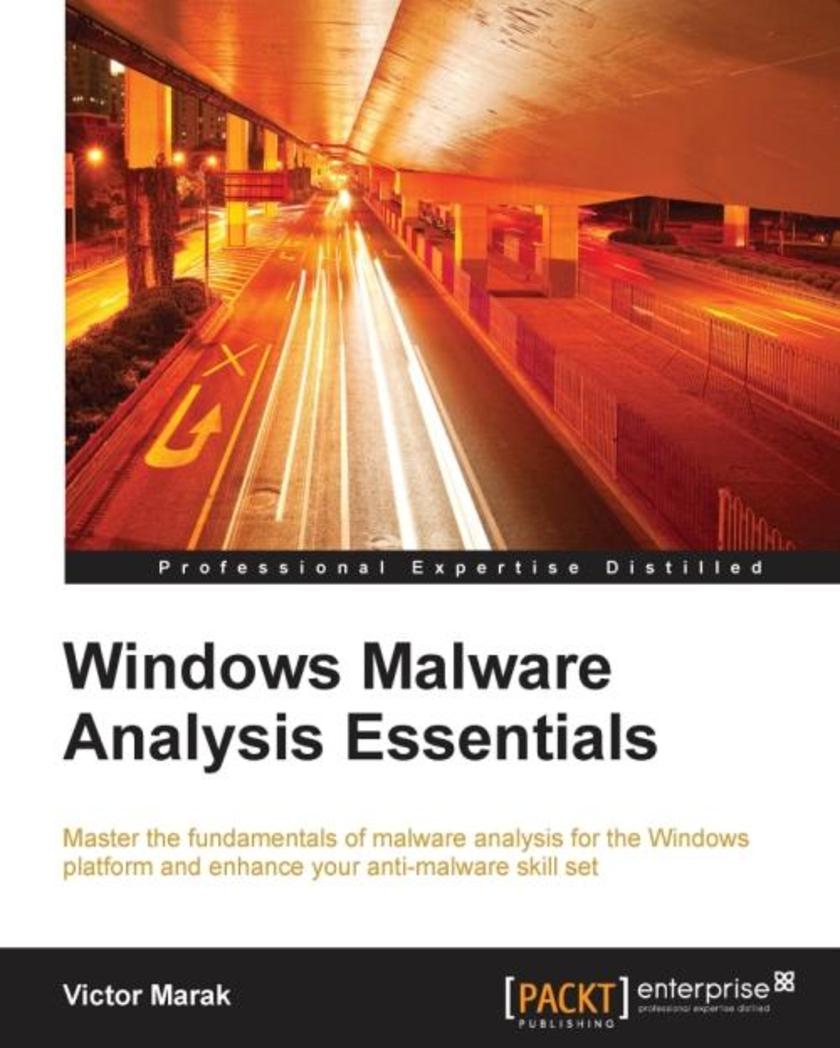
Windows Malware Analysis Essentials
¥90.46
Master the fundamentals of malware analysis for the Windows platform and enhance your anti-malware skill set About This Book Set the baseline towards performing malware analysis on the Windows platform and how to use the tools required to deal with malware Understand how to decipher x86 assembly code from source code inside your favourite development environment A step-by-step based guide that reveals malware analysis from an industry insider and demystifies the process Who This Book Is For This book is best for someone who has prior experience with reverse engineering Windows executables and wants to specialize in malware analysis. The book presents the malware analysis thought process using a show-and-tell approach, and the examples included will give any analyst confidence in how to approach this task on their own the next time around. What You Will Learn Use the positional number system for clear conception of Boolean algebra, that applies to malware research purposes Get introduced to static and dynamic analysis methodologies and build your own malware lab Analyse destructive malware samples from the real world (ITW) from fingerprinting and static/dynamic analysis to the final debrief Understand different modes of linking and how to compile your own libraries from assembly code and integrate the codein your final program Get to know about the various emulators, debuggers and their features, and sandboxes and set them up effectively depending on the required scenario Deal with other malware vectors such as pdf and MS-Office based malware as well as *s and shellcode In Detail Windows OS is the most used operating system in the world and hence is targeted by malware writers. There are strong ramifications if things go awry. Things will go wrong if they can, and hence we see a salvo of attacks that have continued to disrupt the normal scheme of things in our day to day lives. This book will guide you on how to use essential tools such as debuggers, disassemblers, and sandboxes to dissect malware samples. It will expose your innards and then build a report of their indicators of compromise along with detection rule sets that will enable you to help contain the outbreak when faced with such a situation. We will start with the basics of computing fundamentals such as number systems and Boolean algebra. Further, you'll learn about x86 assembly programming and its integration with high level languages such as C++.You'll understand how to decipher disassembly code obtained from the compiled source code and map it back to its original design goals. By delving into end to end analysis with real-world malware samples to solidify your understanding, you'll sharpen your technique of handling destructive malware binaries and vector mechanisms. You will also be encouraged to consider analysis lab safety measures so that there is no infection in the process. Finally, we'll have a rounded tour of various emulations, sandboxing, and debugging options so that you know what is at your disposal when you need a specific kind of weapon in order to nullify the malware. Style and approach An easy to follow, hands-on guide with de*ions and screenshots that will help you execute effective malicious software investigations and conjure up solutions creatively and confidently.
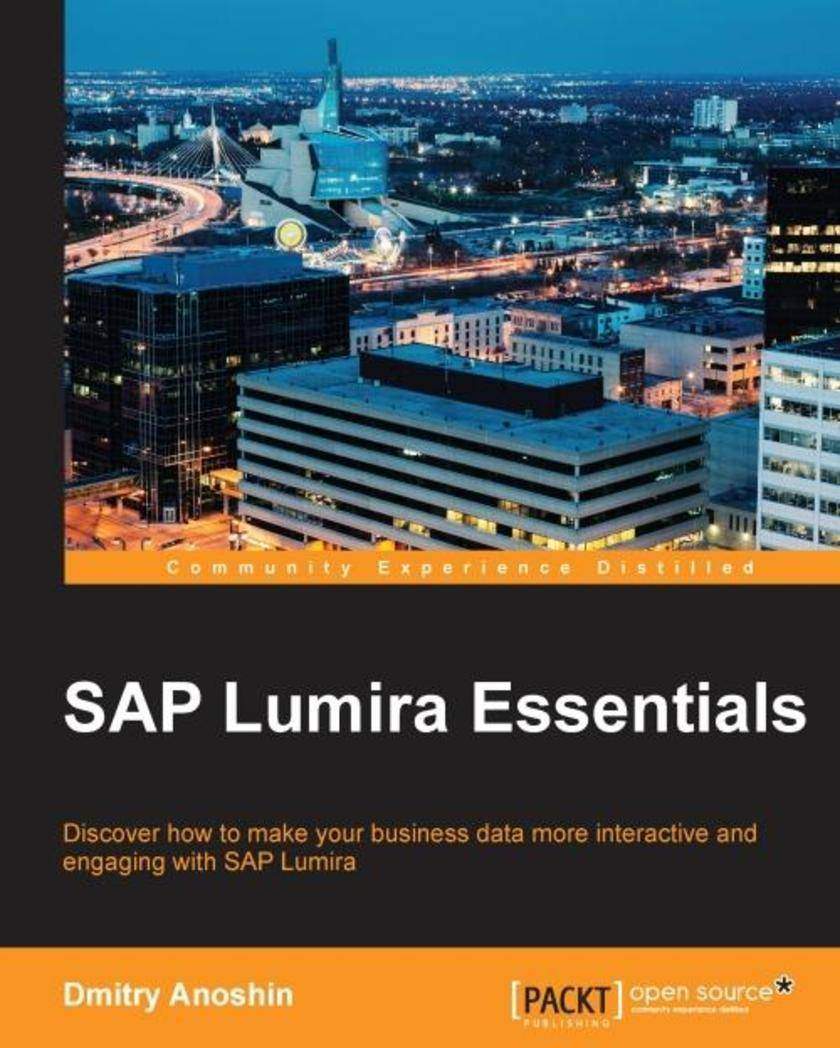
SAP Lumira Essentials
¥80.65
Discover how to make your business data more interactive and engaging with SAP Lumira About This Book Create a powerful data discovery experience with the advanced capabilities of SAP Lumira Find business insights in your data through data blending, wrangling, transformation, and visualization A fast-paced guide packed with hands-on practical examples, real-world solutions, and best practices to get you started with SAP Lumira Who This Book Is For If you are a SAP user, business analyst, BI developer, or a junior data engineer who wants to use SAP Lumira to build creative visualizations, this book is for you. You should have a reasonable level of knowledge of SAP Business Objects and its components. What You Will Learn Deploy SAP Lumira on your computer and learn more about the SAP Lumira interface Extract data from different sources using SAP Lumira’s data connecters Prepare, filter, clean, and format your data Discover visualization techniques and data discovery methods Administrate and customize SAP Lumira to get basic knowledge of its SDK Create various charts to deliver fantastic data visualizations Connect to SAP BusinessObjects BI Platform and SAP HANA to extract, prepare, and visualize data In Detail SAP Lumira allows you to combine data from multiple sources into a single view and create engaging visualizations quickly and easily. It is a reporting platform that helps users access data and independently perform analysis. With the increasing interest in data discovery, self-service BI, and visualization around the world, tools like SAP Lumira help to eliminate the complexities of analyzing and discovering data. Learn data discovery techniques, build amazing visualizations, create fantastic stories, and share your visualizations through an electronic medium with one of the most powerful tools around—SAP Lumira. You will begin with an overview of the SAP Lumira family of products. You will then go through various data discovery techniques using real-world scenarios of an online e-commerce retailer through detailed recipes on the installation, administration, and customization of SAP Lumira. Next, you will work with data, starting from acquiring data from various data sources, then preparing and visualizing it using the rich functionality of SAP Lumira. Finally, you will present data via a data story or infographic and publish it across your organization or on the World Wide Web. Style and approach This is a step-by-step guide to learning SAP Lumira essentials packed with examples on real-world problems and solutions.
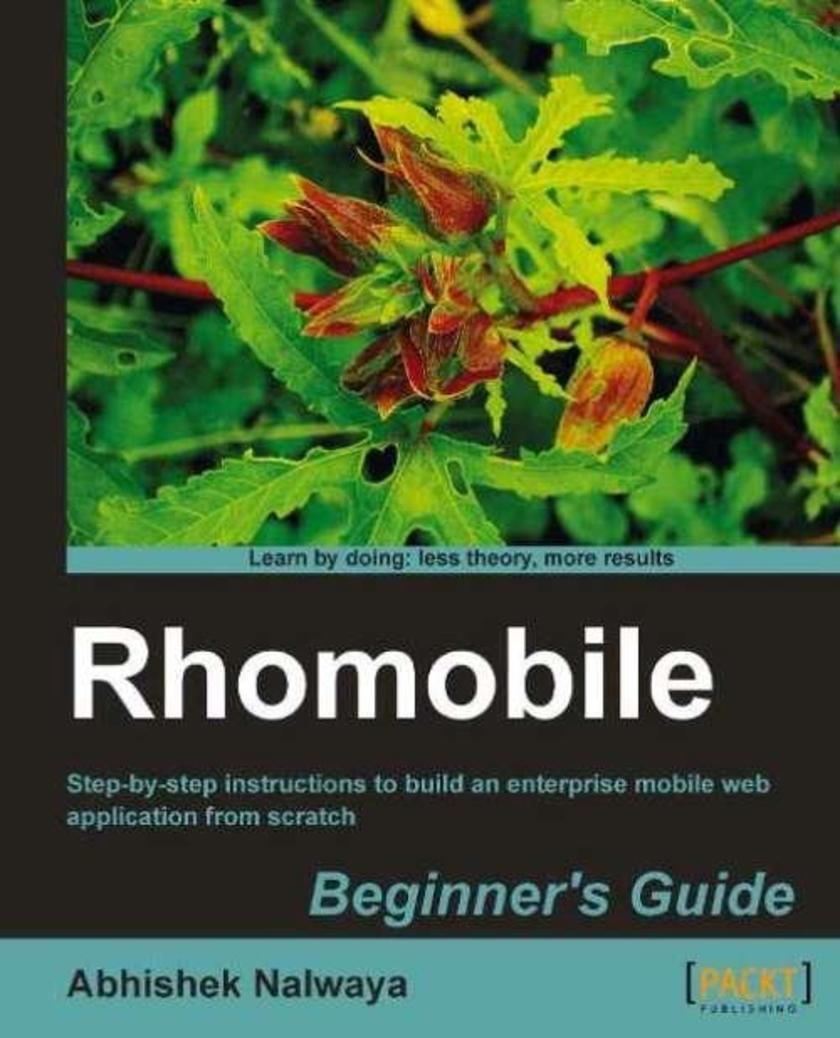
Rhomobile Beginner's Guide
¥80.65
Part of Packt's Beginner's Guide series, this book is packed full of practical examples and screenshots to make building your application straightforward and fun. Whether you have prior experience of developing mobile applications or this is your first venture, all newcomers to Rhomobile will be able to quickly develop their own mobile application. This book is accessible for people who are completely new to Ruby, though having prior knowledge of it would be a huge advantage.
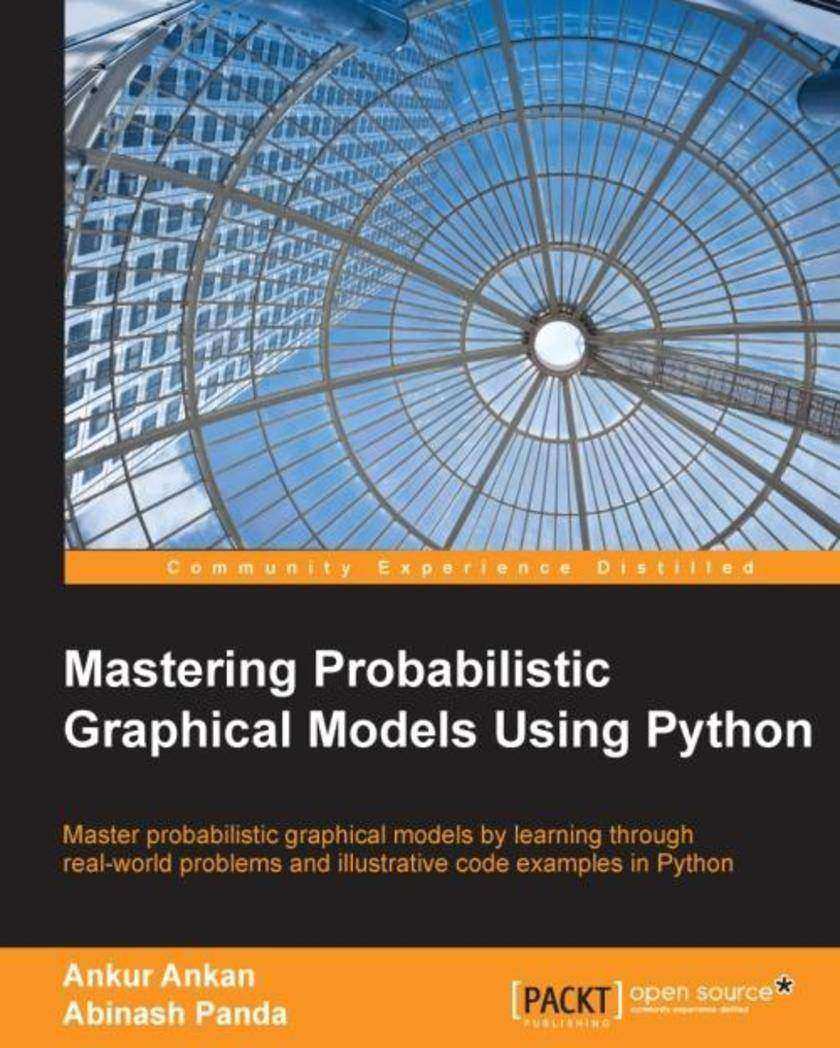
Mastering Probabilistic Graphical Models Using Python
¥80.65
If you are a researcher or a machine learning enthusiast, or are working in the data science field and have a basic idea of Bayesian learning or probabilistic graphical models, this book will help you to understand the details of graphical models and use them in your data science problems.
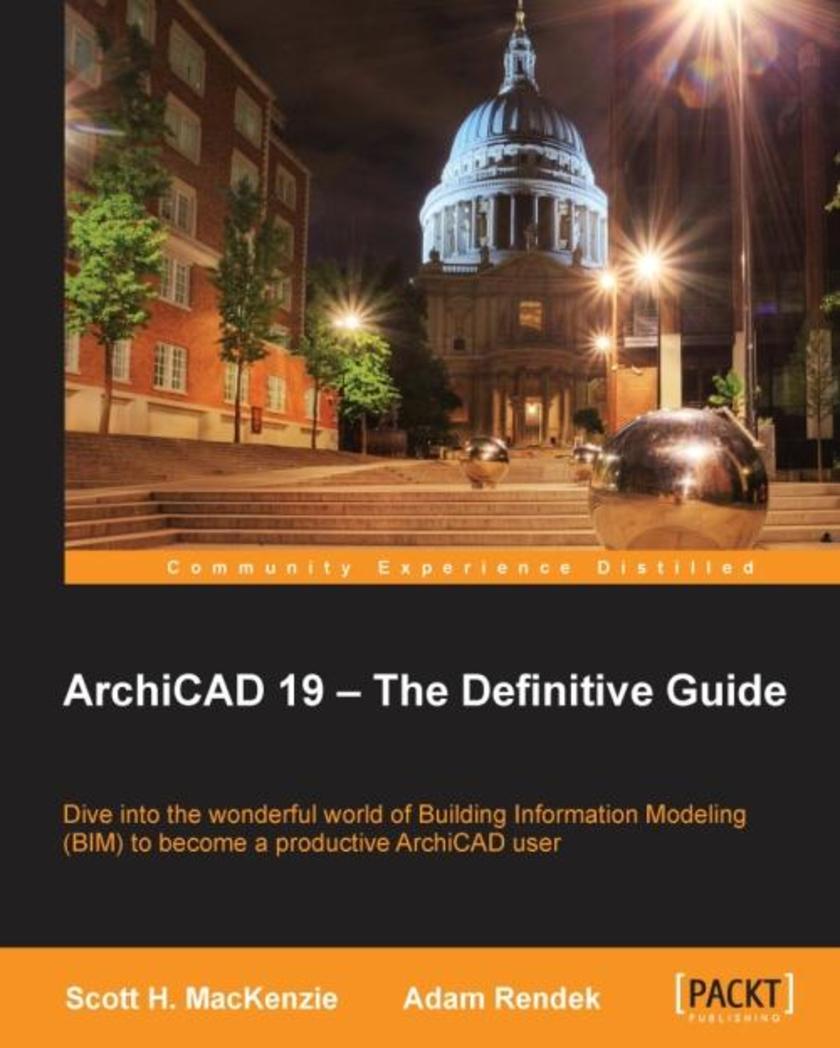
ArchiCAD 19 – The Definitive Guide
¥107.90
This book is for architects, architectural technicians, and construction professionals who are familiar with 2D CAD programs such as AutoCAD Lite, or have some exposure to a 3D BIM package such as Revit. No experience with ArchiCAD is required. If you want to learn the skills needed for architectural drawing production in the real world, then this book is for you.
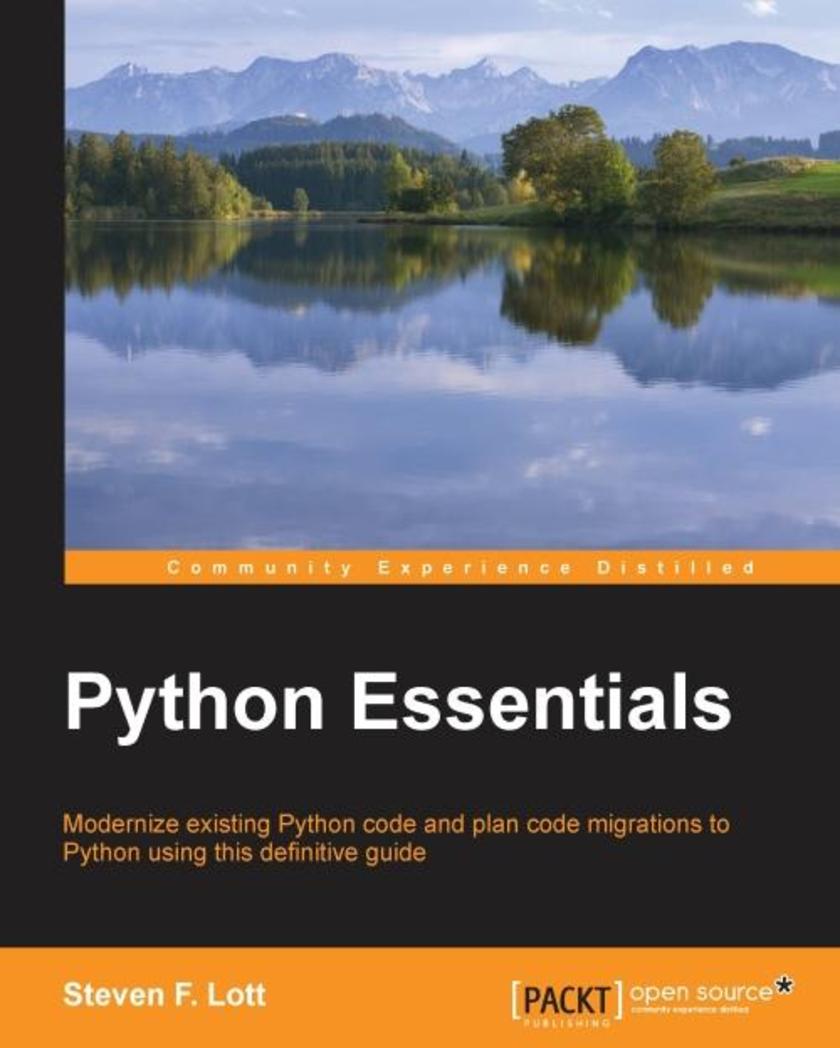
Python Essentials
¥71.93
This book is designed for Python 2 developers who want to get to grips with Python 3 in a short period of time. It covers the key features of Python, assuming you are familiar with the fundamentals of Python 2.
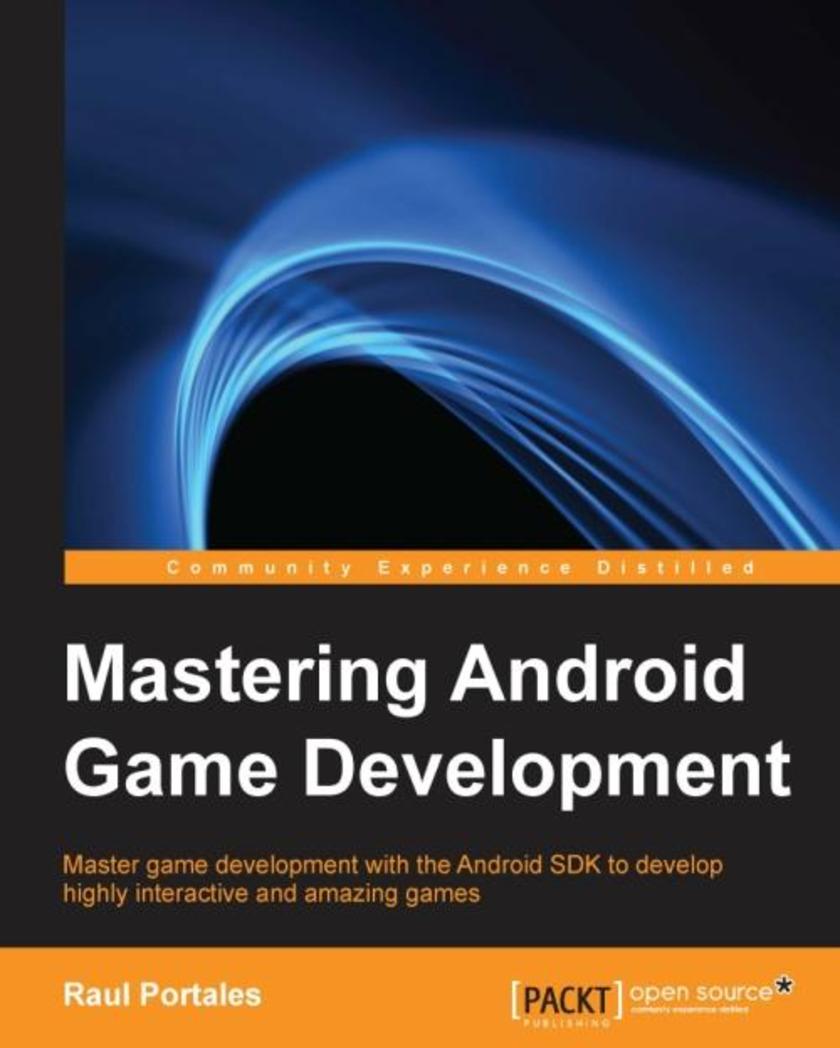
Mastering Android Game Development
¥80.65
If you are an intermediate-level Android developer who wants to create highly interactive and amazing games with the Android SDK, then this book is for you.
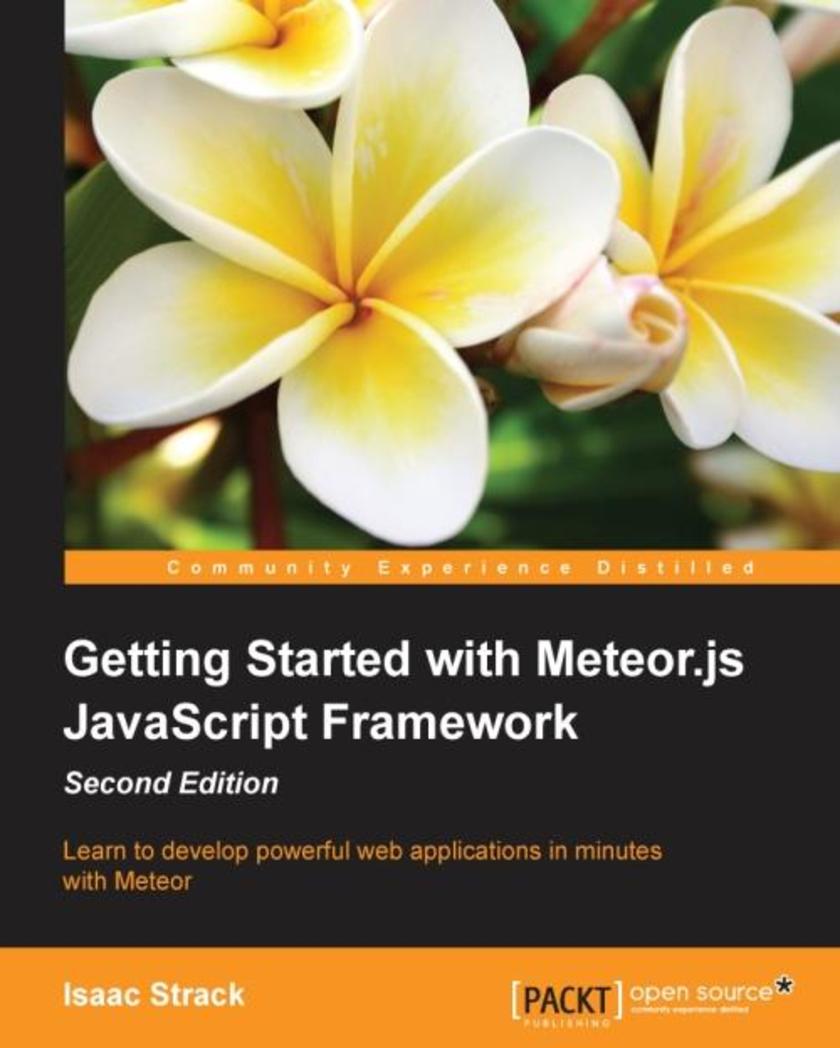
Getting Started with Meteor.js JavaScript Framework - Second Edition
¥49.04
This book is for developers or students who have a working knowledge of JavaScript and HTML, and want to learn how to quickly develop full-stack web applications using pure JavaScript.




 购物车
购物车 个人中心
个人中心



